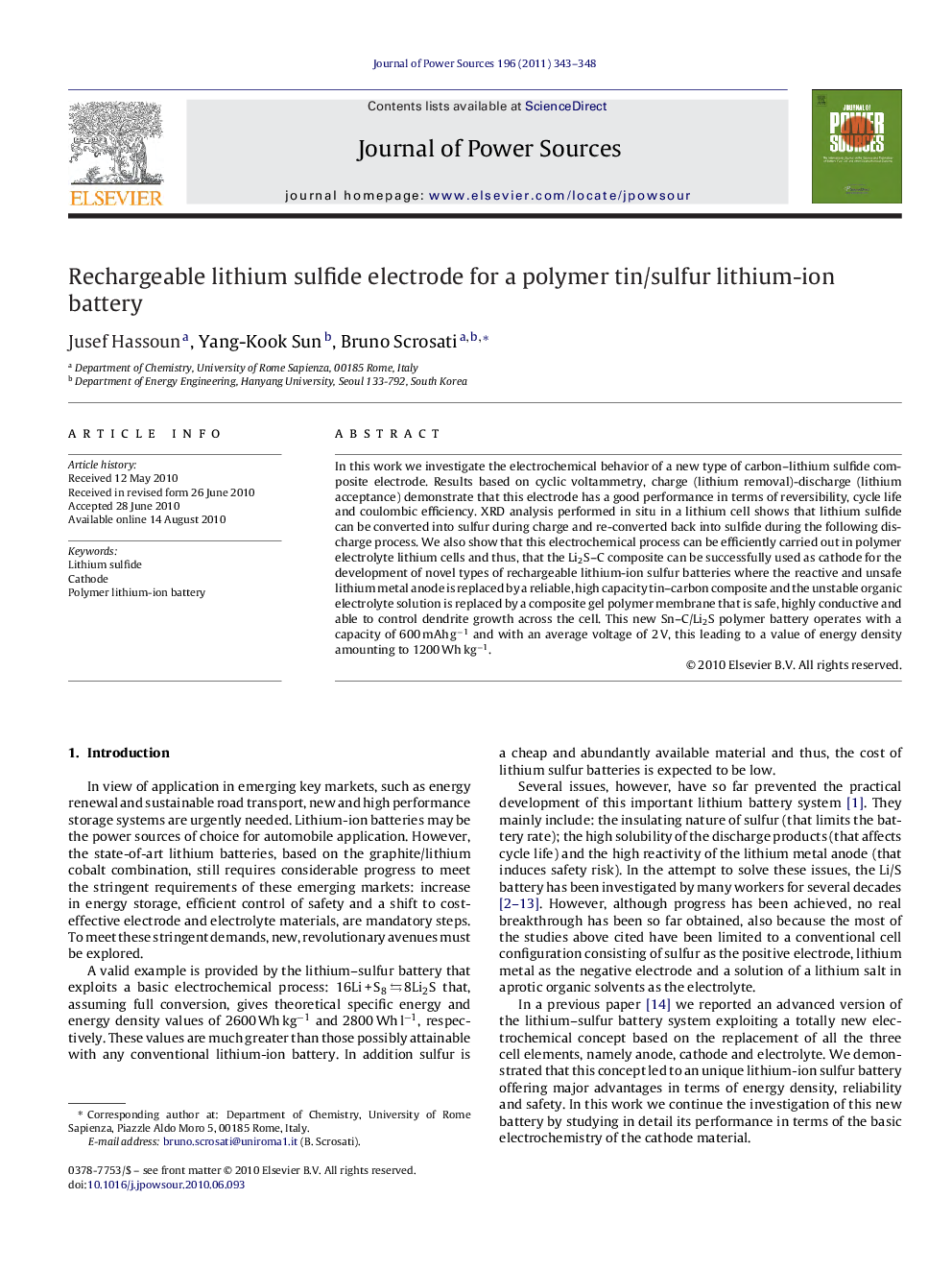| Article ID | Journal | Published Year | Pages | File Type |
|---|---|---|---|---|
| 1293566 | Journal of Power Sources | 2011 | 6 Pages |
In this work we investigate the electrochemical behavior of a new type of carbon–lithium sulfide composite electrode. Results based on cyclic voltammetry, charge (lithium removal)-discharge (lithium acceptance) demonstrate that this electrode has a good performance in terms of reversibility, cycle life and coulombic efficiency. XRD analysis performed in situ in a lithium cell shows that lithium sulfide can be converted into sulfur during charge and re-converted back into sulfide during the following discharge process. We also show that this electrochemical process can be efficiently carried out in polymer electrolyte lithium cells and thus, that the Li2S–C composite can be successfully used as cathode for the development of novel types of rechargeable lithium-ion sulfur batteries where the reactive and unsafe lithium metal anode is replaced by a reliable, high capacity tin–carbon composite and the unstable organic electrolyte solution is replaced by a composite gel polymer membrane that is safe, highly conductive and able to control dendrite growth across the cell. This new Sn–C/Li2S polymer battery operates with a capacity of 600 mAh g−1 and with an average voltage of 2 V, this leading to a value of energy density amounting to 1200 Wh kg−1.
